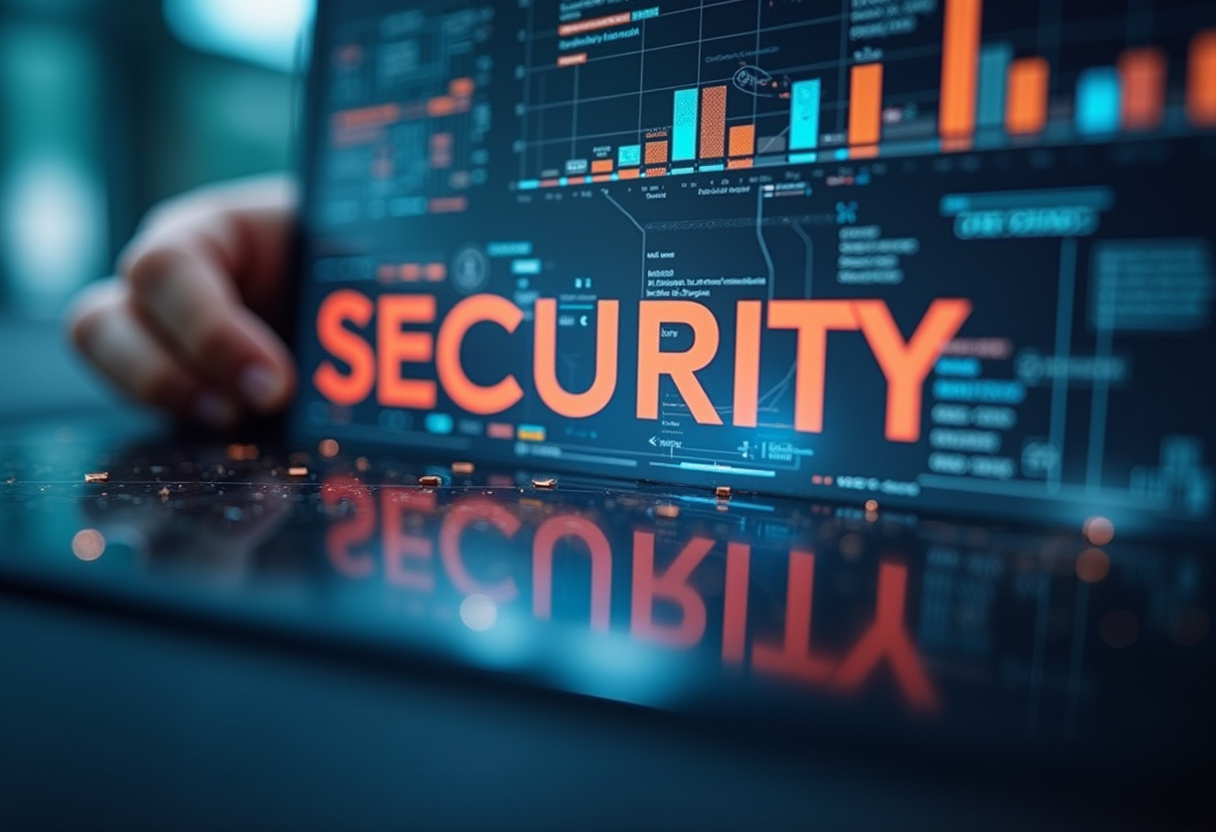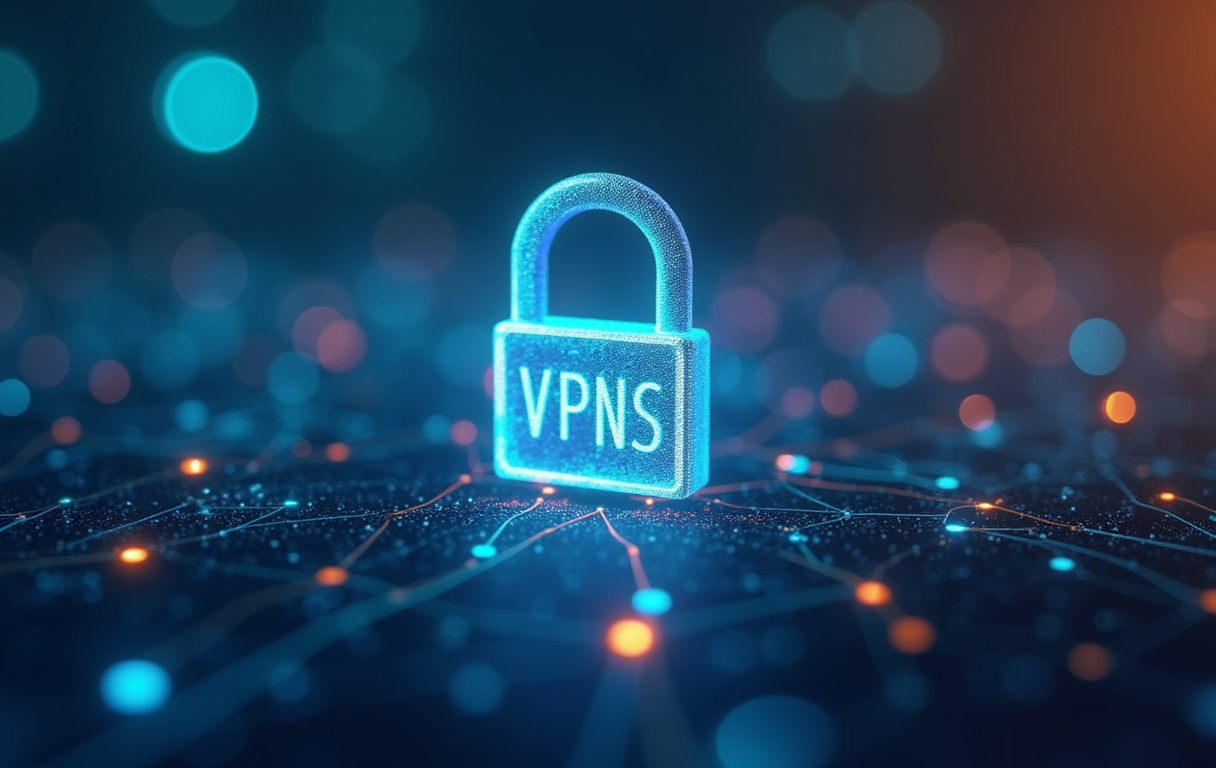VPNs for Remote Design Teams: Ensuring Project Security

Table of Contents
creative process
In the evolving landscape of modern work, remote design teams are rapidly becoming commonplace, offering businesses unprecedented access to global talent and flexibility. However, this shift also introduces a complex web of security challenges, demanding robust strategies to protect sensitive project data and maintain the integrity of the . This article delves into the critical role of Virtual Private Networks (VPNs) in safeguarding remote design teams, exploring how these powerful tools provide a secure foundation for collaboration, communication, and creative innovation.
We'll examine the vulnerabilities inherent in remote work, the functionalities of VPNs, and how they can be strategically implemented to enhance and streamline workflows. The traditional office environment provides a natural layer of security, with controlled access points and internal networks protected by firewalls. Remote teams, however, operate outside this secure perimeter, connecting from diverse locations, often using public or unsecured Wi-Fi networks.
This dispersed environment creates numerous opportunities for cyber threats, including data breaches, eavesdropping, and malware infections. Design teams, in particular, handle highly valuable intellectual property, such as proprietary designs, confidential client information, and innovative product concepts. A data breach can have devastating consequences, leading to financial losses, reputational damage, and legal liabilities.
Therefore, robust security measures are essential to protect these valuable assets. One of the primary vulnerabilities faced by remote design teams is the use of unsecured Wi-Fi networks. Public Wi-Fi hotspots, such as those found in coffee shops, airports, and hotels, are notoriously insecure, often lacking encryption and proper authentication protocols.
Hackers can easily intercept data transmitted over these networks, gaining access to sensitive information, including usernames, passwords, and project files. Imagine a designer working on a confidential branding project at a local coffee shop. Unbeknownst to them, a hacker is lurking on the same network, intercepting their data stream and gaining access to the design files.
This breach could lead to the unauthorized release of the branding concepts, giving competitors a significant advantage. A VPN provides a crucial layer of protection against these types of attacks. A creates an encrypted tunnel between the designer's device and the company's network, shielding their data from prying eyes.
All data transmitted through the tunnel is encrypted, rendering it unreadable to anyone who intercepts it. This ensures that even if a hacker manages to access the network, they will not be able to decipher the data being transmitted. Beyond unsecured Wi-Fi networks, remote design teams also face threats from malware and phishing attacks.
Cybercriminals often target remote workers with sophisticated phishing scams, luring them into revealing sensitive information or downloading malicious software. A VPN can help mitigate these risks by providing an additional layer of security. Some VPN providers offer built-in malware protection, scanning downloaded files and blocking access to malicious websites.
This can help prevent malware from infecting the designer's device and compromising project data. Effective hinges on secure and reliable channels. Remote design teams rely heavily on digital communication tools, such as email, instant messaging, and video conferencing.
However, these tools can also be vulnerable to interception and eavesdropping if they are not properly secured. A VPN encrypts all communication traffic, ensuring that conversations and data exchanged are protected from unauthorized access. This is particularly important when discussing confidential project details or sharing sensitive client information.
Protecting the also means ensuring that designers have access to the resources they need to work effectively. VPNs can provide secure access to internal file servers, cloud-based storage, and other essential resources, regardless of the designer's location. This ensures that designers can access the files and tools they need to complete their work without compromising security.
In essence, a acts as a critical enabler for remote teams, allowing them to collaborate, communicate, and innovate securely, regardless of their physical location. By mitigating the inherent security risks of remote work, VPNs empower design teams to focus on what they do best: creating exceptional designs without compromising valuable intellectual property. The next sections will delve deeper into the practical aspects of implementing and managing VPNs for remote design teams, ensuring that they are used effectively to achieve optimal security and productivity.
creative process
Beyond mitigating immediate security risks, a strategically chosen and implemented VPN solution can significantly enhance the and foster more effective within remote design teams. The benefits extend beyond simple data encryption, impacting collaboration, access to resources, and overall productivity. Imagine a scenario where a design team is spread across multiple time zones, collaborating on a complex project with tight deadlines.
Without a robust and secure communication infrastructure, managing workflows, exchanging feedback, and ensuring everyone is on the same page can become a logistical nightmare. This is where a steps in to streamline operations and create a more cohesive and efficient working environment. Secure access to shared resources is paramount for any design team.
Designers often work with large files, including high-resolution images, 3D models, and complex video assets. Transferring these files securely and efficiently is essential for maintaining project timelines and ensuring data integrity. A VPN provides a secure and reliable connection to shared file servers, allowing team members to access the resources they need, regardless of their location.
This eliminates the need for insecure file-sharing methods, such as email attachments or public cloud storage services, which can expose sensitive data to potential breaches. Furthermore, a facilitates real-time collaboration on design projects. Many design tools now offer collaborative features, allowing multiple designers to work on the same file simultaneously.
However, these features require a secure and stable network connection to function effectively. A VPN ensures that these connections are encrypted and protected, preventing unauthorized access and ensuring the integrity of the shared design files. Consider a team of graphic designers working on a marketing campaign.
They need to collaborate on the design of various assets, including website banners, social media graphics, and print advertisements. A VPN allows them to securely access and edit the files in real-time, ensuring that everyone is working with the latest version of the design and that their collaborative efforts are protected from prying eyes. Effective is also enhanced by a well-implemented VPN solution.
Remote teams rely heavily on digital communication tools, such as instant messaging, video conferencing, and project management software. A VPN encrypts all communication traffic, ensuring that conversations and data exchanged are protected from unauthorized access. This is particularly important when discussing confidential project details or sharing sensitive client information.
For example, a team might be using a project management tool to track tasks, deadlines, and progress. A VPN ensures that all project-related data, including discussions, file uploads, and task assignments, are transmitted securely. This protects the confidentiality of the project and prevents unauthorized individuals from accessing sensitive information.
Moreover, a can help bridge geographical barriers and foster a sense of community among remote team members. By providing a secure and reliable connection to the company network, it allows designers to feel more connected to their colleagues and the organization as a whole. This can improve morale, reduce feelings of isolation, and foster a more collaborative and innovative work environment.
Beyond the technical benefits, a VPN can also empower designers to work more effectively by providing them with greater privacy and control over their online activity. By masking their IP address and encrypting their data, a allows designers to browse the internet without being tracked or monitored. This can be particularly important for designers who are working on sensitive projects or who value their online privacy.
Integrating the seamlessly into the team's workflow is crucial for maximizing its benefits. It should be a tool that empowers designers to collaborate more effectively, rather than hindering their productivity with complex configurations or slow connections. Regular training and support are essential to ensure that team members understand how to use the VPN correctly and can troubleshoot any issues that may arise.
By fostering a culture of security awareness and providing the necessary support, organizations can ensure that their remote design teams are able to leverage the full potential of VPNs to enhance their creative process and maintain the integrity of their projects. The choice of VPN also plays a significant role. Factors such as speed, reliability, server locations, and encryption protocols all play a crucial role in determining the VPN's overall effectiveness.
Opting for a reputable VPN provider with a proven track record of security and performance is paramount. Prioritizing these aspects ensures that the smooth and secure flow of the is maintained, and reinforces the team's ability to deliver exceptional results.
VPN for design
Implementing a within a remote team requires a strategic approach that considers not just security, but also usability, performance, and ongoing management. Selecting the right VPN solution is the first critical step, followed by careful configuration, deployment, and continuous monitoring to ensure optimal and minimal disruption to the . One of the most important considerations when choosing a VPN is the level of encryption it provides.
Strong encryption is essential for protecting sensitive data from unauthorized access. Look for VPNs that use industry-standard encryption protocols, such as AES (Advanced Encryption Standard) with a key length of 256 bits. This level of encryption is considered virtually unbreakable and provides a high degree of security.
Beyond encryption, it's also important to consider the VPN's protocol. Common VPN protocols include OpenVPN, IKEv2/IPsec, and WireGuard. Each protocol has its own strengths and weaknesses in terms of security, speed, and compatibility.
OpenVPN is a widely respected protocol known for its strong security and flexibility. It's open-source, which means that it has been thoroughly vetted by security experts and is less likely to contain vulnerabilities. IKEv2/IPsec is another secure and reliable protocol that is often used on mobile devices.
WireGuard is a newer protocol that is gaining popularity due to its speed and efficiency. The number and location of servers offered by a VPN provider is another critical factor to consider. A larger network of servers provides more flexibility and allows designers to connect to servers that are geographically closer to their location, which can improve speed and performance.
It's also important to choose a VPN provider that has servers in countries where the team's clients or partners are located, as this can facilitate secure and efficient communication. Consider a team collaborating on a project with a client in Japan. Having a with servers in Japan allows the team to securely access resources hosted in that region and communicate with the client without experiencing significant latency.
Usability is another key consideration when implementing a . The VPN client should be easy to install, configure, and use, even for designers who are not technically savvy. The interface should be intuitive and provide clear instructions on how to connect to the VPN and troubleshoot any issues that may arise.
Some VPN providers offer custom clients that are specifically designed for different operating systems and devices. These clients often provide additional features, such as automatic connection to the VPN when the device is connected to an unsecured Wi-Fi network. Performance is also crucial for maintaining productivity.
A slow VPN connection can significantly impact the , making it difficult to access large files, participate in video conferences, or collaborate on design projects in real-time. To ensure optimal performance, it's important to choose a VPN provider that has a fast and reliable network. It's also important to test the VPN connection from different locations to ensure that it provides consistent performance regardless of the designer's location.
Ongoing management is essential for maintaining the security and effectiveness of a solution. This includes regularly updating the VPN client software, monitoring the VPN connection for security threats, and providing ongoing training and support to team members. Organizations should also establish clear policies and procedures for VPN usage, outlining the types of activities that are permitted and prohibited, and providing guidance on how to report security incidents.
Regular security audits can help identify any vulnerabilities in the VPN configuration and ensure that the solution is properly protecting sensitive data. Furthermore, integrating the with other security tools, such as firewalls and intrusion detection systems, can provide a more comprehensive security posture. By taking a strategic and proactive approach to VPN implementation and management, organizations can ensure that their remote design teams are able to collaborate, communicate, and innovate securely, without compromising valuable intellectual property.
Choosing a VPN is a careful balance between speed, security and ease of use ensuring you get the right is a key component to .
remote design VPN
Continue writing the pharagraph Nr:4 of the article structure, the pharagraph should be clear well written and with a 600 word length. The human element is often the weakest link in any security system, and remote design teams are no exception. Even with the most robust in place, human error or negligence can undermine security efforts and expose sensitive data.
Therefore, comprehensive training and awareness programs are crucial for ensuring that team members understand the importance of security and follow best practices for protecting project data. Furthermore, consistent about security protocols and emerging threats helps foster a security-conscious culture. One of the most common security threats faced by remote design teams is phishing attacks.
Phishing attacks are designed to trick users into revealing sensitive information, such as usernames, passwords, or credit card details. These attacks often come in the form of emails or messages that appear to be legitimate but are actually designed to steal information or install malware. Design teams are particularly vulnerable to phishing attacks because they often work with sensitive client information and financial data.
Training should cover how to recognize phishing emails, avoid clicking on suspicious links, and report potential security incidents. For example, designers should be taught to verify the sender of an email before clicking on any links or attachments, and to be wary of emails that ask for sensitive information or create a sense of urgency. Another important aspect of training is password security.
Many users still use weak or easily guessable passwords, making their accounts vulnerable to hacking. Training should cover the importance of using strong, unique passwords for each account, and using a password manager to securely store and manage passwords. For instance, encourage designers to use a combination of upper- and lowercase letters, numbers, and symbols in their passwords and to avoid using personal information, such as their name or birthdate.
Secure file handling practices are also critical for protecting project data. Designers should be trained on how to properly encrypt sensitive files, store files securely, and avoid sharing files through insecure channels, such as email attachments or public cloud storage services. In addition to formal training sessions, ongoing security awareness campaigns can help keep security top-of-mind for team members.
These campaigns can include regular newsletters, email reminders, or even gam
remote design VPN
The human element is often the weakest link in any security system, and remote design teams are no exception. Even with the most robust in place, human error or negligence can undermine security efforts and expose sensitive data. Therefore, comprehensive training and awareness programs are crucial for ensuring that team members understand the importance of security and follow best practices for protecting project data.
Furthermore, consistent about security protocols and emerging threats helps foster a security-conscious culture. One of the most common security threats faced by remote design teams is phishing attacks. Phishing attacks are designed to trick users into revealing sensitive information, such as usernames, passwords, or credit card details.
These attacks often come in the form of emails or messages that appear to be legitimate but are actually designed to steal information or install malware. Design teams are particularly vulnerable to phishing attacks because they often work with sensitive client information and financial data. Training should cover how to recognize phishing emails, avoid clicking on suspicious links, and report potential security incidents.
For example, designers should be taught to verify the sender of an email before clicking on any links or attachments, and to be wary of emails that ask for sensitive information or create a sense of urgency. Another important aspect of training is password security. Many users still use weak or easily guessable passwords, making their accounts vulnerable to hacking.
Training should cover the importance of using strong, unique passwords for each account, and using a password manager to securely store and manage passwords. For instance, encourage designers to use a combination of upper- and lowercase letters, numbers, and symbols in their passwords and to avoid using personal information, such as their name or birthdate. Secure file handling practices are also critical for protecting project data.
Designers should be trained on how to properly encrypt sensitive files, store files securely, and avoid sharing files through insecure channels, such as email attachments or public cloud storage services. In addition to formal training sessions, ongoing security awareness campaigns can help keep security top-of-mind for team members. These campaigns can include regular newsletters, email reminders, or even gamified security quizzes to reinforce key concepts.
Consistent is also crucial for maintaining a strong security posture. Security protocols and policies should be clearly communicated to all team members, and they should be encouraged to ask questions and report any security concerns. Regular meetings can be used to discuss security topics, share best practices, and provide updates on emerging threats.
Creating a culture of open communication and collaboration fosters a sense of shared responsibility for security and empowers team members to take proactive steps to protect project data. Beyond training and awareness, organizations should also implement technical controls to further mitigate the risk of human error. Multi-factor authentication (MFA) can add an extra layer of security to user accounts, requiring users to provide multiple forms of identification before gaining access.
This makes it much more difficult for hackers to access accounts, even if they have stolen the user's password. Data loss prevention (DLP) tools can help prevent sensitive data from being accidentally or intentionally leaked. These tools can monitor network traffic, scan files for sensitive information, and block the transfer of data to unauthorized locations.
Endpoint security solutions can provide additional protection for individual devices, detecting and preventing malware infections and unauthorized access. A comprehensive approach to security, combining technical controls with training and awareness programs, is essential for protecting remote design teams from the risks of human error. By investing in their team's security knowledge and providing them with the tools they need to stay safe, organizations can minimize the risk of data breaches and maintain the integrity of their .
This proactive approach demonstrates a commitment to that clients and partners will value, strengthening trust and fostering long-term relationships. The key to a successful security strategy is continuous improvement. Regularly assess your security posture, identify vulnerabilities, and update your policies and procedures as needed.
The threat landscape is constantly evolving, so it's important to stay informed about the latest threats and implement appropriate safeguards to protect your remote design team. Making security a top priority will not only protect your valuable assets but also empower your designers to focus on what they do best: creating innovative and impactful designs. The right is more than just a piece of software; it's a component of a broader security strategy that safeguards your team, your projects, and your reputation.
remote design VPN
In conclusion, securing remote design teams requires a multifaceted approach where a forms a critical yet integrated component of a broader security strategy. It's not enough to simply implement a VPN and assume that your data is protected. A holistic view encompassing technology, training, policy, and ongoing vigilance is essential for maintaining robust and fostering a secure environment where the can thrive.
The initial investment in a is undoubtedly worthwhile when considering the potential costs associated with data breaches, intellectual property theft, and reputational damage. However, the selection process must be diligent. Free or low-cost VPN solutions often lack the robust security features, reliable performance, and privacy policies necessary for protecting sensitive design data.
Investing in a reputable VPN provider with a proven track record is crucial. Furthermore, the chosen VPN should seamlessly integrate with the team's existing workflow and collaborative tools. A clunky or difficult-to-use VPN will hinder productivity and potentially lead to team members circumventing security protocols.
Regular audits of the VPN configuration and user activity are essential for identifying potential vulnerabilities and ensuring that policies are being followed. These audits should assess the strength of encryption protocols, the security of server locations, and the effectiveness of user authentication methods. Just as crucial as the technology is the human element.
Comprehensive training programs should equip remote design team members with the knowledge and skills necessary to identify and avoid security threats. This includes training on recognizing phishing emails, creating strong passwords, handling sensitive files securely, and reporting suspicious activity. Ongoing security awareness campaigns can reinforce these concepts and keep security top-of-mind.
Creating a security-conscious culture within the remote design team is paramount. Open communication about security policies, potential threats, and best practices fosters a sense of shared responsibility and empowers team members to take proactive steps to protect project data. Encourage team members to report any security concerns and to ask questions about security protocols.
Regularly reviewing and updating security policies is also essential. The threat landscape is constantly evolving, and new vulnerabilities are discovered regularly. Regularly review your security policies to ensure that they are up-to-date and address the latest threats.
A strong incident response plan is a vital component of a comprehensive security strategy. This plan should outline the steps to be taken in the event of a security breach, including containment, eradication, and recovery. Having a well-defined incident response plan can help minimize the damage caused by a security breach and restore normal operations quickly.
The benefits of a well-implemented security strategy, including a robust , extend beyond simply protecting data. It also fosters trust among clients and partners, demonstrating a commitment to protecting their sensitive information. This can lead to stronger relationships and increased business opportunities.
In a world where data breaches are becoming increasingly common, demonstrating a strong commitment to security can be a significant competitive advantage. For remote design teams, a secure environment is essential for fostering creativity and innovation. When designers feel confident that their data and communications are protected, they are more likely to take risks, experiment with new ideas, and push the boundaries of their craft.
By creating a secure and supportive environment, organizations can empower their remote design teams to achieve their full potential. Ultimately, the success of a remote design team hinges not only on its creative talent but also on its ability to protect the sensitive data entrusted to it. A comprehensive security strategy, with a at its core, is the foundation for building a secure, collaborative, and innovative remote design environment.
By prioritizing security and investing in the right tools, training, and policies, organizations can empower their remote design teams to thrive in the digital age. Securing data and facilitating are fundamental to preserving the integrity of the and ensuring the long-term success of remote design endeavors.
Stay Updated
Get the latest VPN news, tips, and exclusive deals to your inbox.




